Alternating Dumbbell Press: How to, Benefits, Muscles Worked, Variations, Mistakes To Avoid And Alternative Exercises
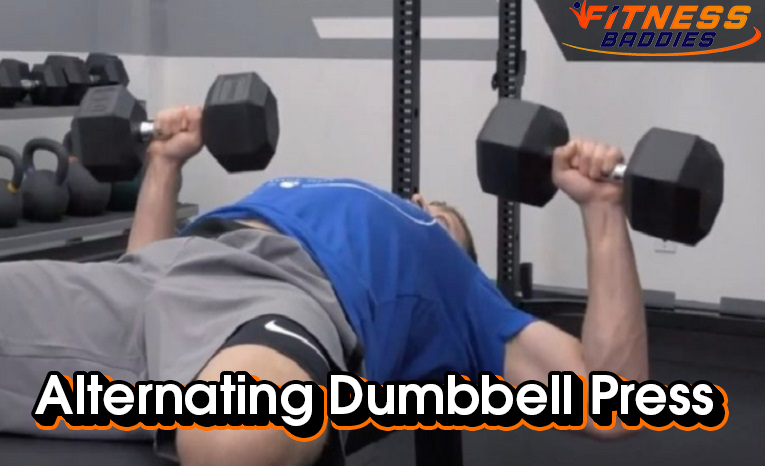
The world of bodybuilding and fitness had for a brief while where it shifted its focus to isolation moves and exercises performed on machines. This was in the early 2000s or late 90s, I guess.
So much so, that it would be impossible to see people doing the compound Olympic lifting in the gym. Cut to today, the focus has thankfully shifted back to compound lifts.
Most people are happy sticking to the big 7 of hypertrophy (sumo deadlifts, Squats, Barbell rows, Military Presses, Bench Presses, Lunges, and Farmer’s walk), and rightly so.
But, sometimes this creates a myopic view towards fitness where extremely beneficial exercises don’t get the kind of attention they deserve.
One such move is the Alternating dumbbell press.
This is a terrific exercise for hypertrophy, strength, balance and stability, parameters that can affect both performance and aesthetics. Yet, we rarely see this workout spoken about or added to workout routines.
We figured that this was a great time as any to shine some light on the alternating dumbbell press.
What Is the Alternating Dumbbell Press
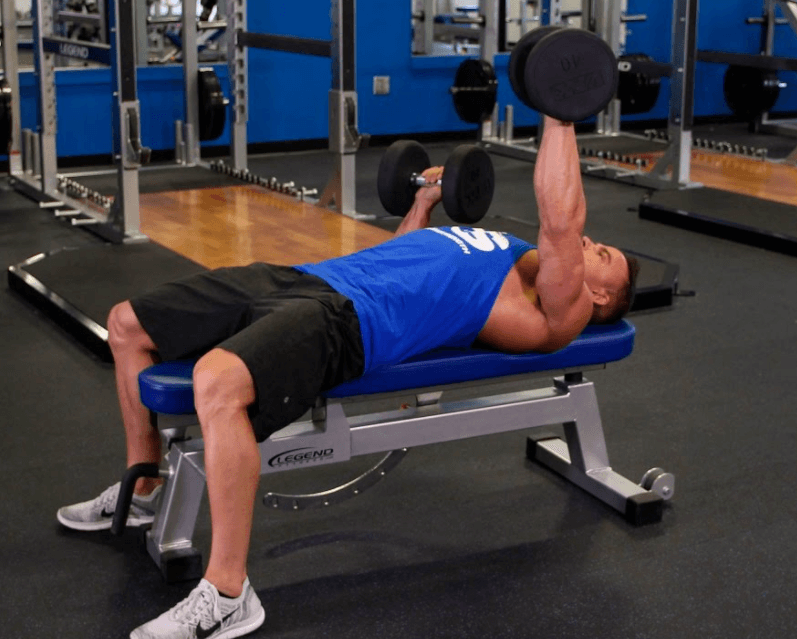
The alternating dumbbell press is essentially a bench press performed (even with some of the most affordable adjustable dumbbells around) by pushing the weight with alternating arms.
This allows you to isolate each part of the pectorals and the other supplementary muscles which help you move the weight.
It’s not clear where or when the exercise originated. The earliest known instance of the workout can be seen in the 1970s when bodybuilding took off in the United States. So, it would be fair to say that it has been around for a long time.
In fact, in many of the Olympia training videos, you see top bodybuilders perform this move regularly.
Cut to today, it has been reduced to an ancillary move that’s only used in some special scenarios.
For instance, if the athlete has disproportionate pectoral muscles, then the alternating press is used to increase size in the weaker muscle.
But that’s not the sole reason why you must consider adding this to your upper body routine.
How to Do the Alternating Dumbbell Press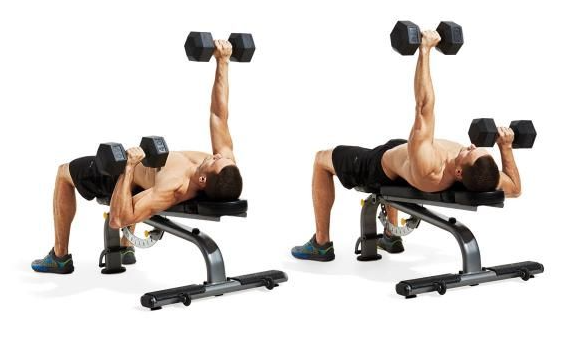
It’s pretty simple if you have done the bench press or dumbbell chest press before.
- Set up the dumbbells at the end of the flat bench. You can also do this with an incline bench for emphasizing on the upper pectorals.
- Pick the dumbbells off the floor. You should maintain a neutral grip with your palms facing inwards. Place the dumbbells on the edge of your quads, like you normally do.
- Push the dumbbells with your legs to lift them off. Lie with your back on the bench. The weights must be straight above your chest with your arms extended without locking the elbow.
- Slowly lower the weights down so that your elbows are bent and the dumbbells are just off the outer chest. Don’t go too wide or too narrow. Shoulder width is the sweet spot. This is your starting position.
- Slowly push the dumbbell upward with one arm, as far as you can without locking the elbow. Lower it to the starting position. The other arm stays in the starting position.
- Repeat with the other arm and lower it back. This is one rep.
- Repeat for the desired number of reps.
Benefits of the Alternating Dumbbell Press
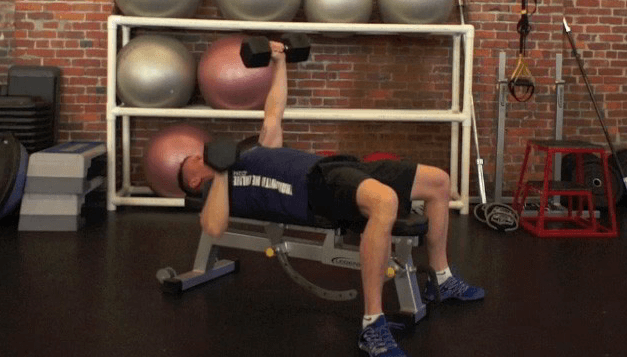
What is it that makes the alternating dumbbell press such a terrific exercise?
Let’s find out.
Beginner Friendly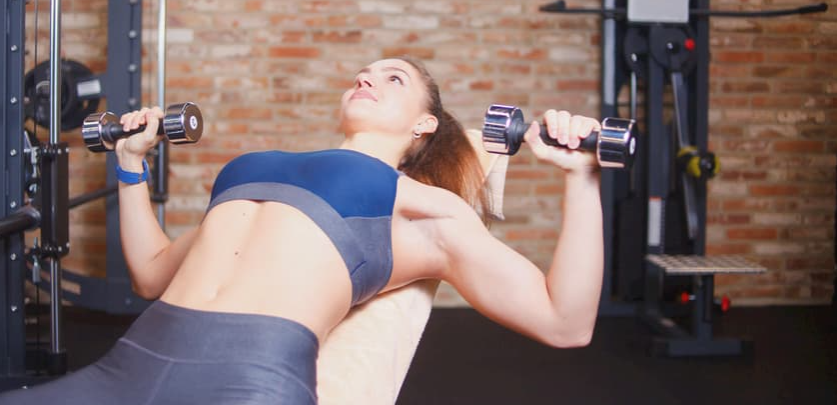
Any dumbbell-version of a barbell-exercise is generally considered beginner-friendly. That includes the dumbbell bench press, the dumbbell overhead press, and the alternating dumbbell press. I mean, compared to other exercises like the seated tricep press, the alternating dumbbell press is a great workout for beginners that is even applied in youth weight lifting training as well.
Dumbbells are easier to control, allow you to work on your form and you can perform the exercise without a spotter, which isn’t often the case when handling one of those hefty budget barbells.
In case you ever fail mid-rep, you can drop the dumbbells (Although dropping weights isn’t gym etiquette – that’s how folks end up with bent barbels, damaged gym floor, or injury). You don’t need to measure your fitness level, for example, to do dumbbell only workouts. Pretty much anybody can do them.
So, if you are starting off with the bench press and are unable to move a lot of weight, try the alternating dumbbell press.
Fixes muscles imbalances

Sometimes, we subconsciously use more of our dominant side to move weight, which creates an imbalance in strength and size. This can also happen due to preexisting injuries, which might shift the balance towards your dominant side.
This is most common with pectorals, but can even be seen with well-built quads, arms and lats.
In extreme cases, athletes have even resorted to cosmetic surgery to fix their disproportionate pecs.
The alternating dumbbell press might be a cheaper, easier alternative to try. By isolating each side of your body, you are now moving an equal amount of weight. This might be slower than going under the knife. But it’s a long-term solution for sure.
Safe to Train Alone
Like we mentioned briefly, alternating dumbbell presses allow you to move more weight without needing a spotter.
Muscles Worked by Alternating Dumbbell Presses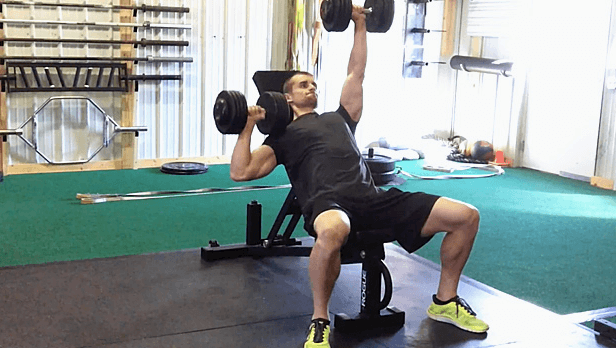
The alternating dumbbell press is essentially a compound move, just like the bench press is. The slight difference in this is that there’s some isolation involved as well. Think of it as the best of both worlds.
It’s a known fact that it involves almost every major muscle group in your upper body.
But a lot of people do not know that it also engages a lot of stabilizer muscles, which helps improve balance and form.
Pectoralis Major
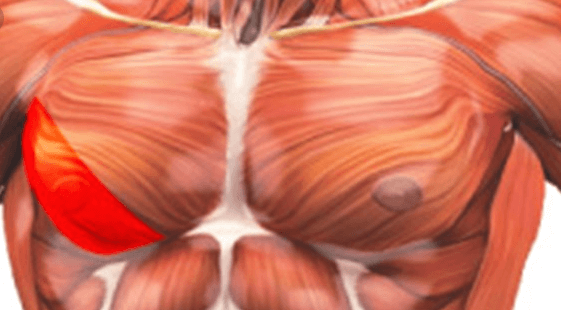
Any variation of the chest press will primarily target the pectoralis major. This is the biggest muscle in your chest, also called the upper chest in layman’s terms.
This is also one of the commonest muscles to get imbalanced with improper force distribution in the barbell press. Hence, the effectiveness of the alternating dumbbell press in fixing such imbalances.
Anterior deltoid

The alternating dumbbell press is one of the best exercises to target the anterior deltoid, or train the shoulders, especially the front portion. A lot of people discover that they have shoulder issues while performing the barbell press. This is primarily because they accidentally end up rounding the shoulders inwards rather than resting it on the bench.
The alternating dumbbell press allows them to perform the press move with much lesser strain on the deltoids. You are also less likely to lift the shoulders off the bench while performing an isolation move.
It’s also advisable to consider whether you are fit enough to train shoulders after chest day to avoid poor form from fatigue, which is a direct ticket for injury, especially in the sensitive shoulder region.
Core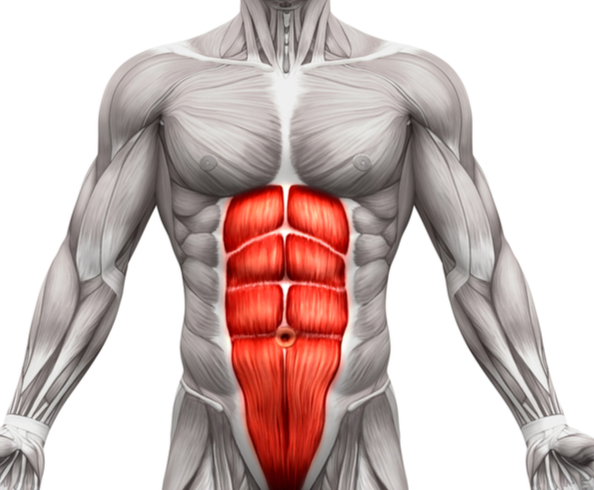
When you are isolating one half of the body, you have to brace and engage your 10-pack abs maintain balance and stability. The heavier you go with the weight, the more you engage the core. Another great exercise that targets the core is the double crunch (although there’s also a myriad of other workouts – both calisthenics and weights exercises, which are just as great for the abs) you don’t needs weights to perform i.
Biceps and triceps

There are two parts to the alternating dumbbell press. Part one, is when you lower the weight and hold it off the upper chest while your other arm lifts the weight. Part two is when you push the weight upwards and lower it again.
The first part is like an isometric hold, which strengthens your long head bicep, engages your forearms and wrists. It’s not a great hypertrophy exercise for the long head bicep. But it definitely adds to your strength.
The second part is a terrific triceps exercise, on par with the close-grip bench press. In a nutshell, it’s the whole 9-yards for your arms. So, this exercise is great if you want to work your triceps and biceps on the same day.
One other exercise that targets these two areas is the Zottman curl, all you need to perform that exercise is a pair of dumbbells, but of course, not the hefty millennium dumbbells.
Clavicle
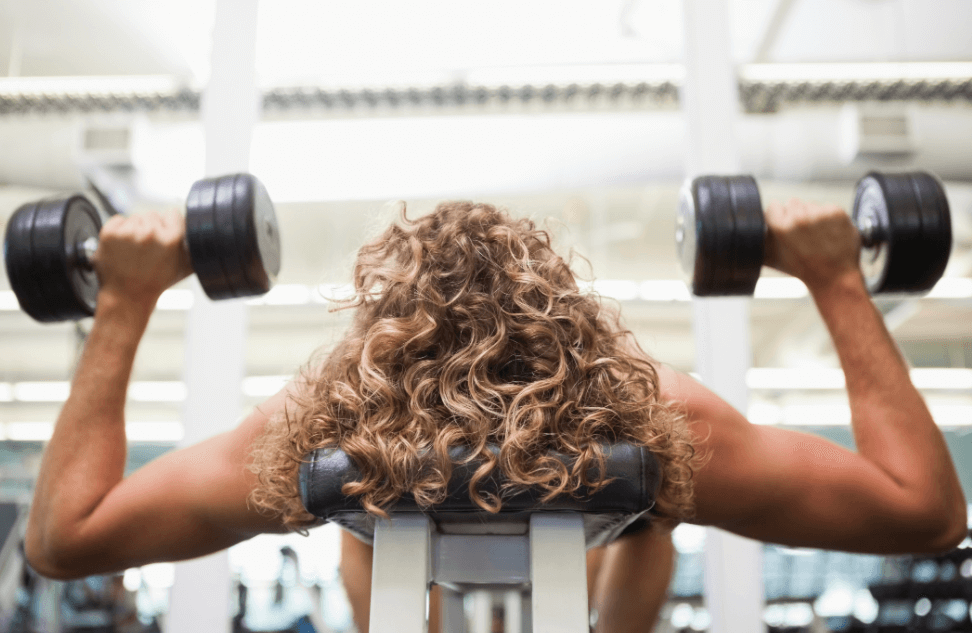
The clavicle, also known as the collar bone, often ends up bearing the brunt of heavy barbell bench presses. This is because of the additional strain that the move places on the acromioclavicular, which is a joint that connects the shoulder to the collar bone.
The alternating dumbbell press helps you isolate and strengthen the clavicle. If you have had collar bone injuries, this is a shortcut to increased mobility and healing.
Variations of the Alternating Dumbbell Press 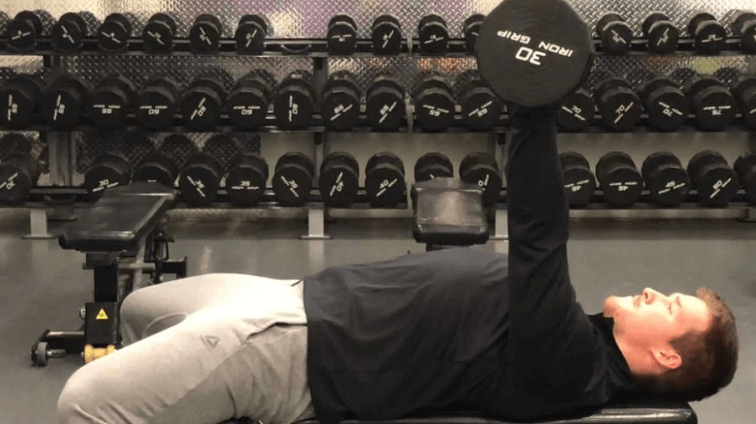
If you want to mix things up, or are just bored with the regular alternating dumbbell press, then here are some interesting variations that you might want to try.
Straight Arm Alternating Presses
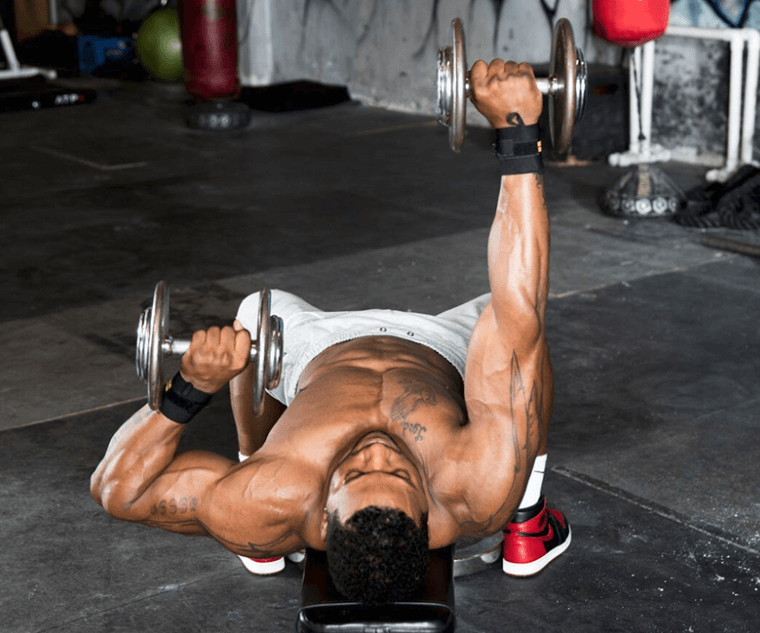
This variation of the alternating dumbbell press features an isometric hold instead of lowering the weight to the starting position. So, you lie down on your back with the weights held straight above your chest.
Then, you hold one dumbbell there and lower the second arm to the starting position.
Perform the reps with this arm, while the second one stays flexed above your chest. Once you finish the desired number of reps, the extended arm is lowered, while the other arm is then held in an isometric hold. Complete an equal number of reps on both sides. You’ll find yourself weeping in no time.
Incline Alternating Dumbbell Press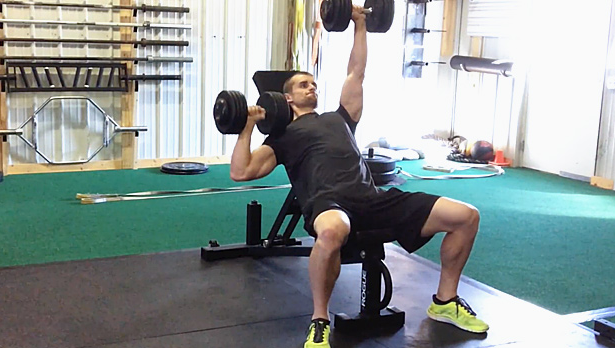
Do the alternating dumbbell press on an incline bench instead of a flat bench to increase the emphasis on the pectoralis major.
Alternating Dumbbell Floor Press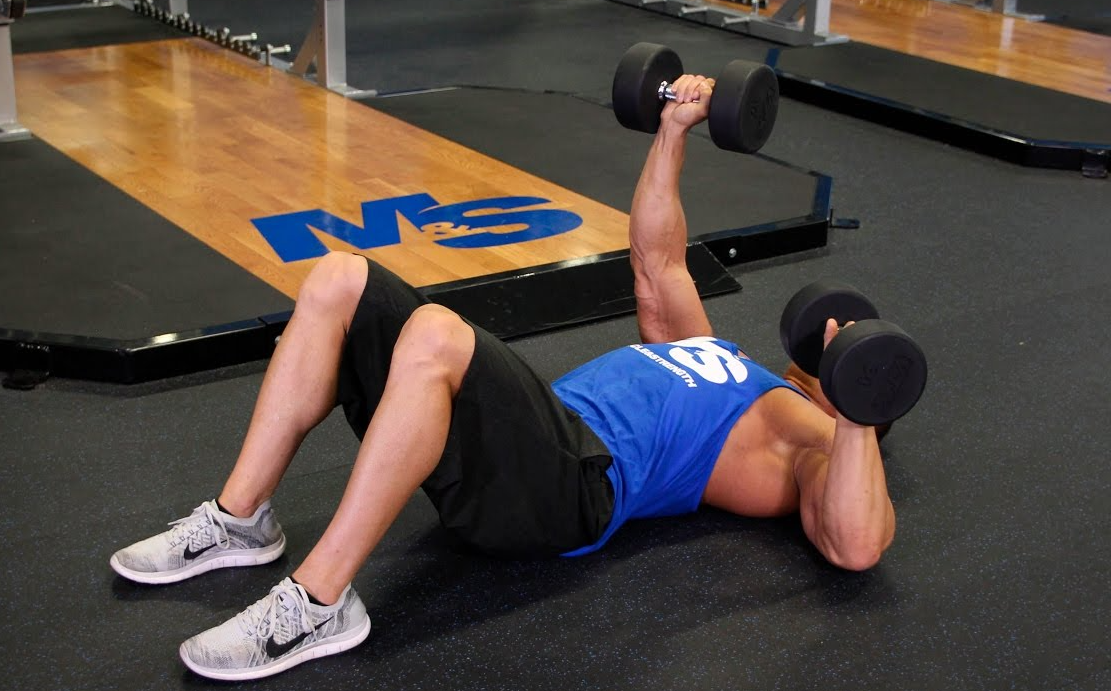
If you wish to shift focus on your triceps and shoulders a wee bit more, you can perform the alternating dumbbell press on a floor, instead of a bench. You get a lesser range of motion but will recruit more of your arms and shoulders.
Some other variation that you can try is by alternating your grip from neutral to supinated and pronated.
Mistakes to Avoid When Doing Alternating Dumbbell Presses
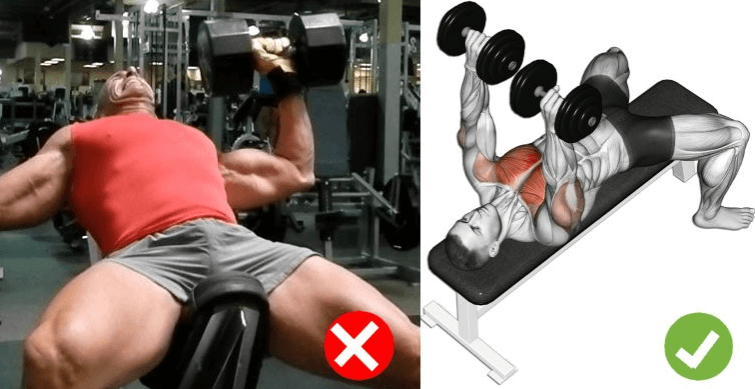
One of the reasons why the alternating dumbbell press is so popular with beginners is because it’s one of the easiest exercises to pull off.
That said, there are some tips to keep in mind to ensure that you don’t neglect form or even worse, end up injured.
- Do not arch your back or lift your head – Keep your back flat on the bench, or the ground, wherever it is that you are performing the exercise. Do not arch it during the move, or lift the head up.
- Do not go too heavy – One of the advantages of the dumbbell press is that you can go heavier without assistance from a spotter. But if you go too heavy and do ego-lifts, your form is likely to suffer and the risk of injury gets amplified.
- Warm up your rotator cuff – The rotator cuff affects mobility, range of motion and stability in your shoulders. If the rotator cuff is not warmed up before performing the dumbbell press, there’s a significant chance that you’ll injure it.
- Push the weight straight up – Some people try to push the weight upwards in an arc, which is not really necessary while performing bench presses. Always aim to push the weight straight up and then down. The dumbbells should be just off the outer chest. It should not touch too high on the chest else you will start to overcompensate with your deltoids instead.
Alternating Dumbbell Press Alternatives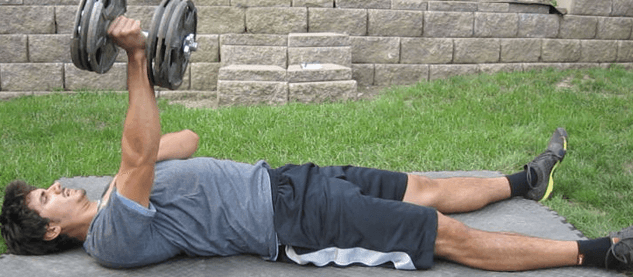
The fact is that there’s no alternative for the alternating dumbbell press because there are very few exercises that let you isolate one side of the body. Maybe cable crossovers. But even those recruit different muscles.
But if you are looking for some other exercises that are equally good, then here are three options.
Regular Dumbbell Press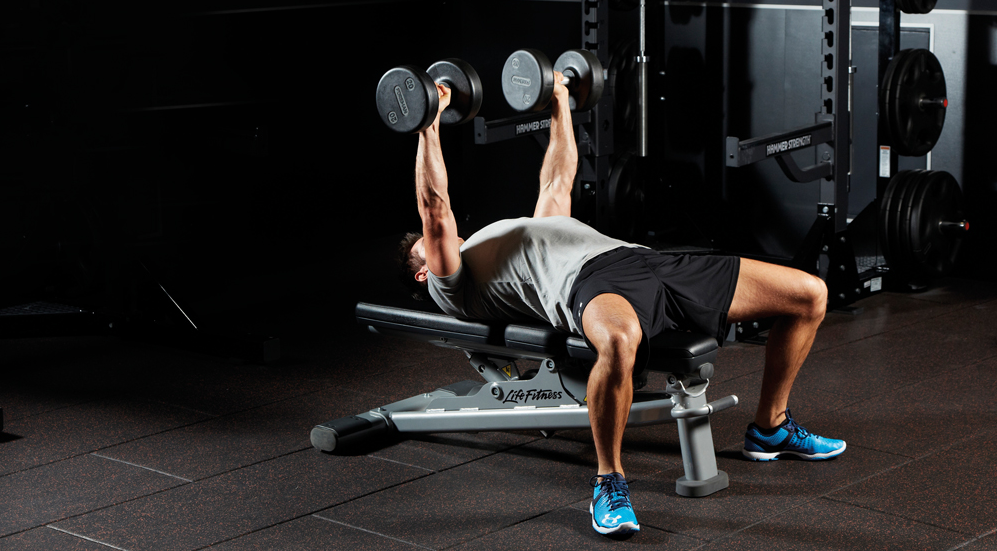
- Lie back on the bench with your back flat and lift both dumbbells up, right above your chest.
- Lower them down together instead of the alternating arms. That’s your starting position. Now, push them up again together.
These are like the bench press, performed with dumbbells instead of barbells.
This video demonstrates the regular dumbbell press:
Alternating Dumbbell Curl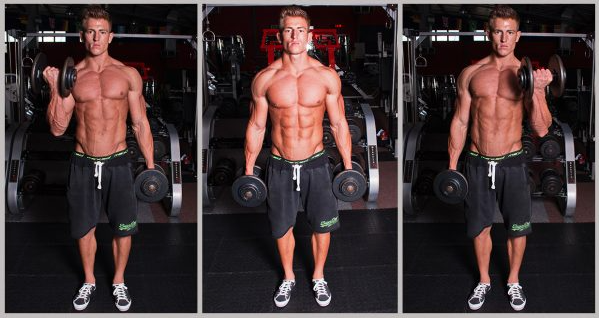
- Grab a dumbbell in each hand. Stand with your feet shoulder width apart and hold the dumbbells in an overhand grip. The palms should face inwards. This is your starting position.
- Lift one dumbbell up towards the shoulder while rotating your wrist so that your palm faces towards the shoulders at the top of the movement. Lower to the starting position.
- Repeat with alternating hands for the desired number of reps.
This video shows you how to do the alternating dumbbell curl:
Barbell Bench Press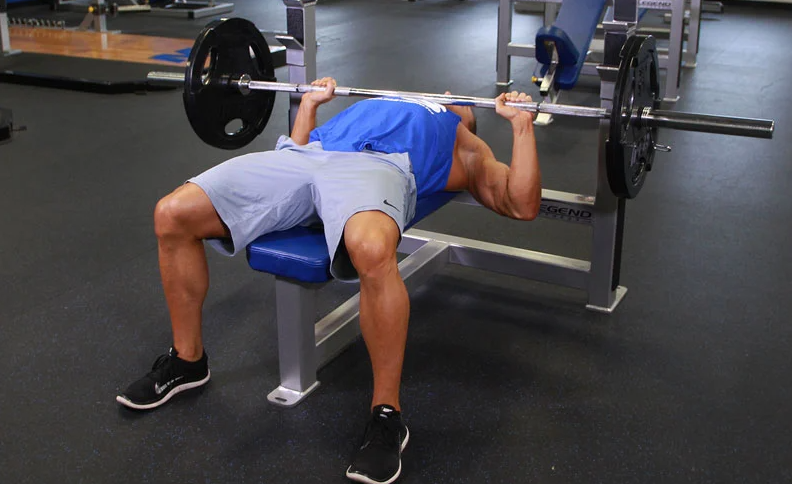
Last but not the least, we have the good old Barbell bench press.
- Rack the barbell on the bench with the weight that you are comfortable lifting.
- Lie on the bench with a flat back.
- Grip the barbell with a pronated grip that’s shoulder-width or slightly more than that.
- Slowly lift the barbell off the rack and lower it to your upper chest, bending the elbows out.
- Lift up until the arms are fully extended above the chest. That’s one rep.
- Continue for the desired number of reps.
Like this video:
Related Readings:
- Cardio After Workouts
- Natural Pre Workout
- Does Exercise Increase Metabolism? Science Answers
- Tips & Strategies I Used to Stop Eating Sugar
- Wall Angels Exercise: Step by Step Guide
- Hips Don’t Lie: How Many Lunges Should You Do a Day?


